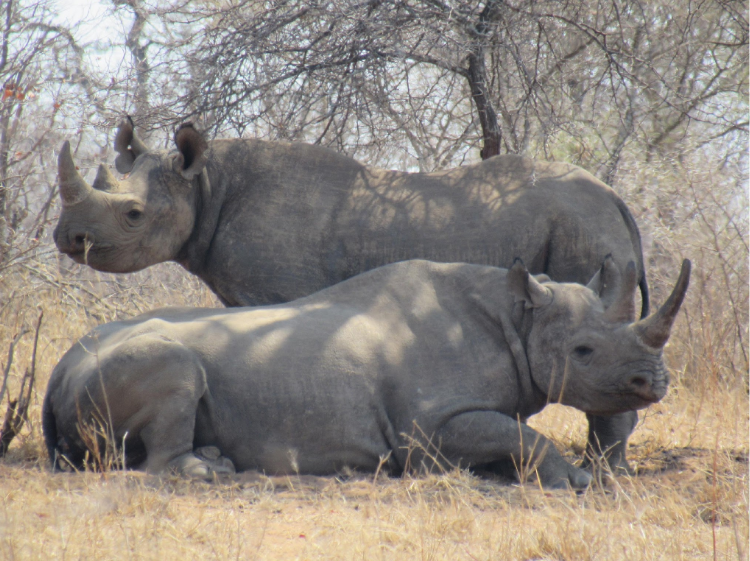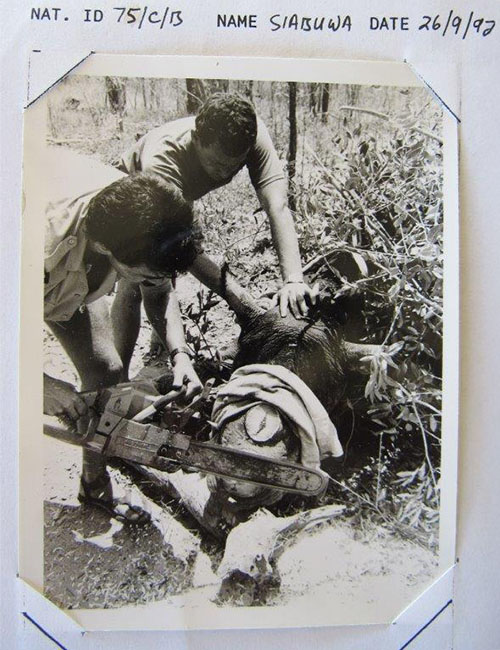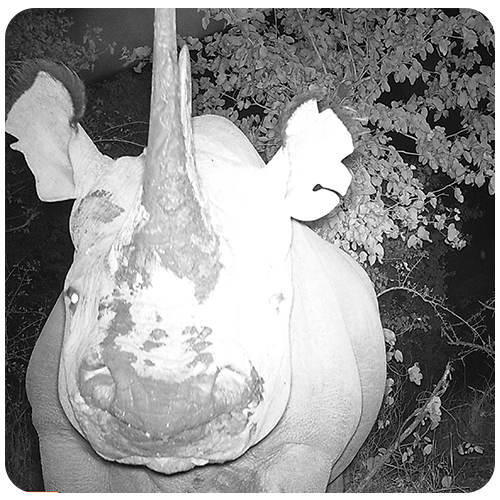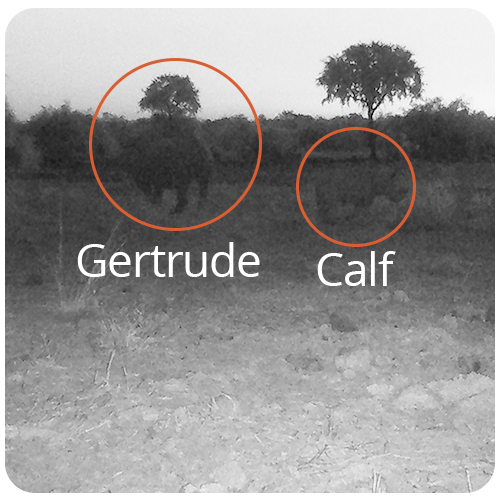Save a Rhino, Shape the Future

In the early 1990s, Zimbabwe’s black rhino population faced a severe crisis due to rampant poaching in the Zambezi Valley. Among the survivors was a young female black rhino. In 1992, to protect her from the ongoing cross-border poaching threats, conservationists captured and relocated the rhino, who they named Siabuwa, to the Bubiana Conservancy in Zimbabwe’s Lowveld region.

At that time, Africa’s black rhino numbers had plummeted from approximately 65,000 in the early 1970s to a mere 2,500 individuals. Zimbabwe’s population had been decimated from an estimated 1,700 down to 300. Siabuwa’s relocation was a critical move in the broader conservation efforts to safeguard the species from extinction.
A decade later, when Zimbabwe’s land reform program disrupted conservation efforts in Bubiana Conservancy, Siabuwa was shot by poachers. Fortunately, the Lowveld Rhino Trust, a long-time partner of the International Rhino Foundation (IRF), intervened promptly. They treated Siabuwa’s injuries and she recovered quickly. Poaching pressure continued to increase as Zimbabwe slid into more and more chaos. Eventually it became necessary to move her along with the entire surviving Bubiana black rhino population to a safer habitat in the Bubye Valley Conservancy (BVC).
Siabuwa’s resilience and survival had a profound impact on the black rhino population. She gave birth to ten calves, who themselves have produced 31 offspring. Those calves have since given birth to 14 more. Collectively Siabuwa’s family has made a significant contribution to what has grown to become the largest black rhino population on private land in the world.
Siabuwa’s Legacy
In 2023, Siabuwa passed away naturally at the age of 39, leaving behind a legacy that underscores the importance of individuals in conservation efforts.

Director of the Lowveld Rhino Trust, Raoul du Toit said “Siabuwa is a perfect example of how every individual matters. Based on a report that single rhino spoor had been seen we set off to capture it. It took two weeks just to find her. Sharing the driving with my wife and with our infant child sleeping in the footwell, it took us another twenty-four hours to transport Siabuwa to Bubiana. The time and effort put into just this one rhino has given us well over 50 rhinos in return. She has more than made her fair share of effort to save this species.”
Continuing Siabuwa’s legacy, one of Siabuwa’s daughters, Gill, now 18 years old, has become a prolific matriarch in her own right. Gill has given birth to six calves, four of whom are females, further contributing to the growth of the black rhino population. Gill’s first two daughters have collectively had seven calves, forming a close-knit, multigenerational family.
Thanks to IRF-supported camera traps, heartwarming images have been captured of Gill, her newest calf and her extended family near a dam in Bubye Valley Conservancy. These photos also feature Gertrude, Gill’s second daughter, with her own new calf, showcasing the thriving lineage that began with Siabuwa.


This interconnected family exemplifies what is possible when rhinos are provided with adequate space, resources and protection. Each calf represents hope for the future of a species that has been pushed to the brink of extinction.
Stories like Siabuwa’s and Gill’s serve as powerful reminders that conservation is a long-term commitment that can yield tremendous rewards. With continued support, rhino families can grow and thrive, ensuring the survival of these magnificent creatures for generations to come.
Every rhino is vital, and each birth brings renewed hope for the species.
